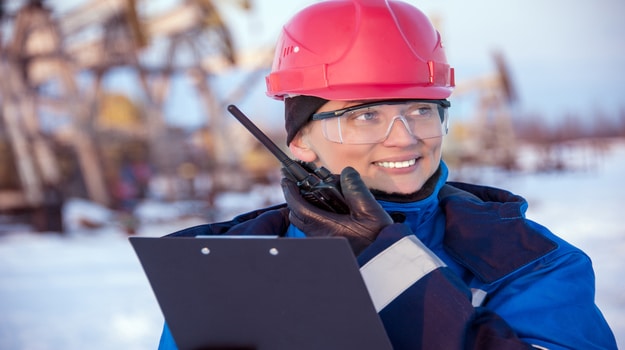
Workplace Safety for Winter Weather
November 28, 2016 | Staffing Blog
Along with winter and snowy weather comes a sharp increase in slips, falls, and other cold weather related injuries. As an employer, it is your responsibility to provide workplace safety and to protect your employees from the various hazards that accompany cold weather. Here are some potential hazards to look out for and how to lessen the risks that come along with them:
Hazard: Icy walkways. Slip and fall type injuries experience a sharp increase during the winter months. This is due to the icy and wet conditions that occur inside and outside of the facility.
Solution: Frequent maintenance of the grounds. There is no “easy” way out of this. It will require time and effort to keep the walkways clear of slip hazards. Do you have a maintenance staff? Make ground maintenance part of their standard work by tasking them to make daily rounds around campus to look for slippery and icy areas. When they find these spots, they can simply throw down some ice melt or plow/shovel the walkways. Take an extra step and place a bucket of ice melt (clearly marked of course) at every entrance and exit of your buildings so anyone who needs it can access it quickly.
The floors inside the building can become wet from foot and forklift traffic as well. Make sure to have the cleaning crew spend extra time in the winter to keep puddles cleaned up and make sure to have plenty of wet floor signs.
Hazard: Cold Stress or cold related injuries. Do you have employees that work outdoors during the winter? Employees like maintenance crews, forklift drivers, and truck drivers are more susceptible to injuries due to cold conditions. You cannot control the weather, but there are steps that you can take to avoid hypothermia, frostbite, and other cold weather injuries.
Solution: The first place to start is proper training. Train your employees to look for the signs and symptoms of hypothermia and what steps to take in case they or one of their co-workers start to show signs. By doing this, you can avoid or minimize the effects that cold weather has on the human body. Also, knowing what type of boots and clothing to wear can help avoid slips and falls as well.
Employees should be trained to wear the appropriate clothing for the weather but as an employer, there are a couple of things you can do to promote this. Your workplace can implement a cold weather gear allowance that offers to pay for a certain percentage of the cost that employees invest in warm clothing for work. Another thing to consider along these lines is to fully purchase warm work clothes for employees that are required to work outside. You should always provide a warm place for employees to take breaks in and you could even supply hot-chocolate in the break rooms for your employees to help them warm up.
Hazard: Injuries caused by Snow removal equipment. Your company may have snow plows and snow blowers to clear the walkways. If you do, there are a few special precautions that you must take in addition to preventing slips and hypothermia. Working with equipment that has rotating, sharp parts poses a risk of physical injury, up to and including death. This is definitely something that you don’t want to happen to your employees.
Solution: Follow OSHA regulations for powered industrial equipment. This seems obvious for machines like presses, saws, and punch machines but it is easy to overlook things like snow blowers and plows. Have a pre-operation checklist that the operator goes through before each shift and make sure that a new one is completed each time there is a new operator. Monthly preventative maintenance should be performed on all powered equipment to ensure safe operation and no employee should ever operate powered equipment without the proper training.
This list is in no way comprehensive. If you would like to know more about OSHA safety regulations you can visit their website.
Do you have questions for Allegiance Staffing? Feel free to contact us.
